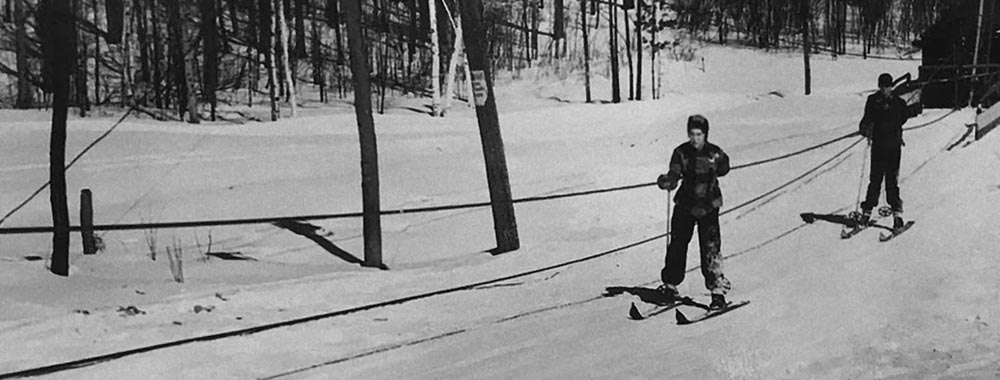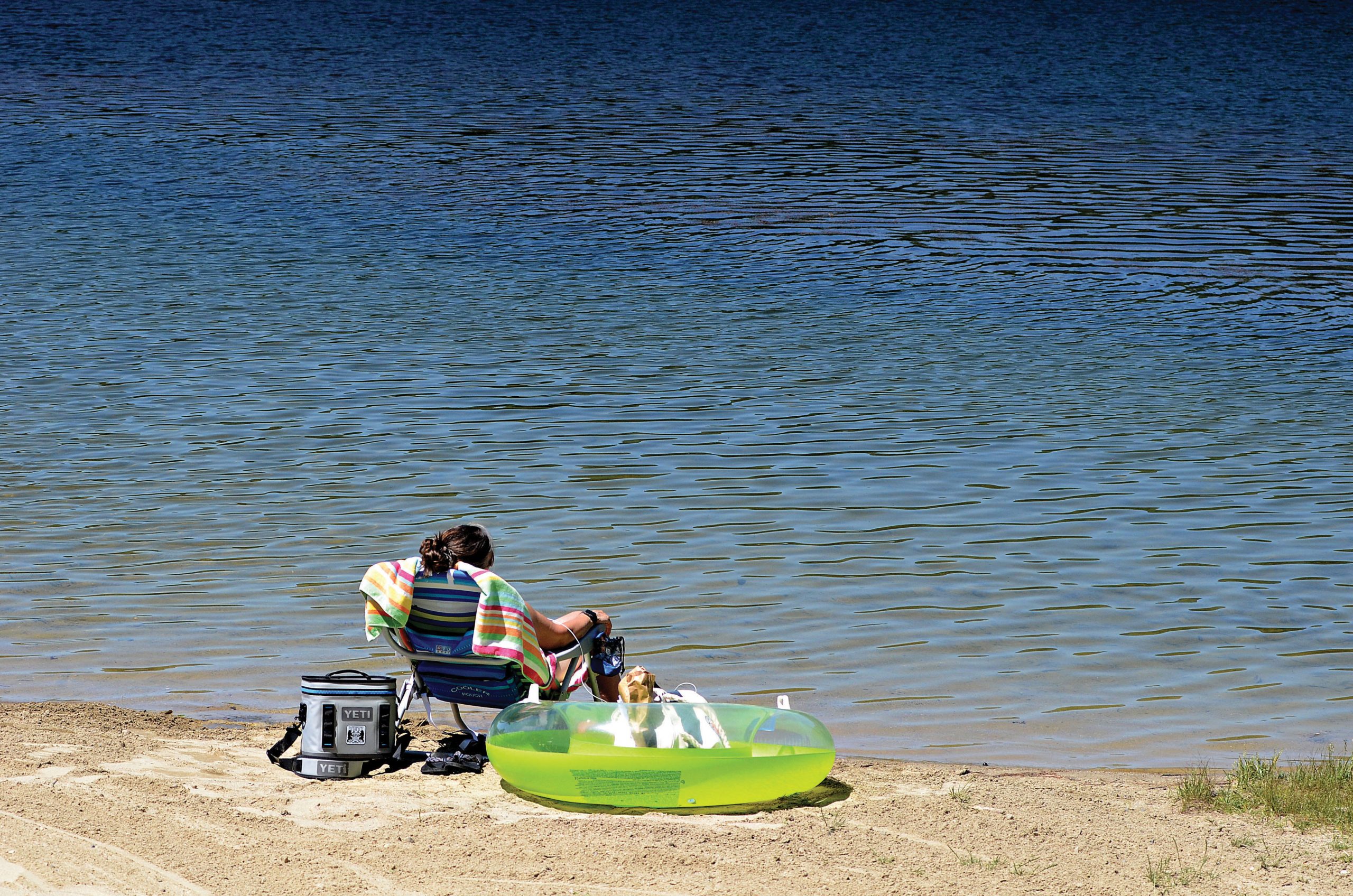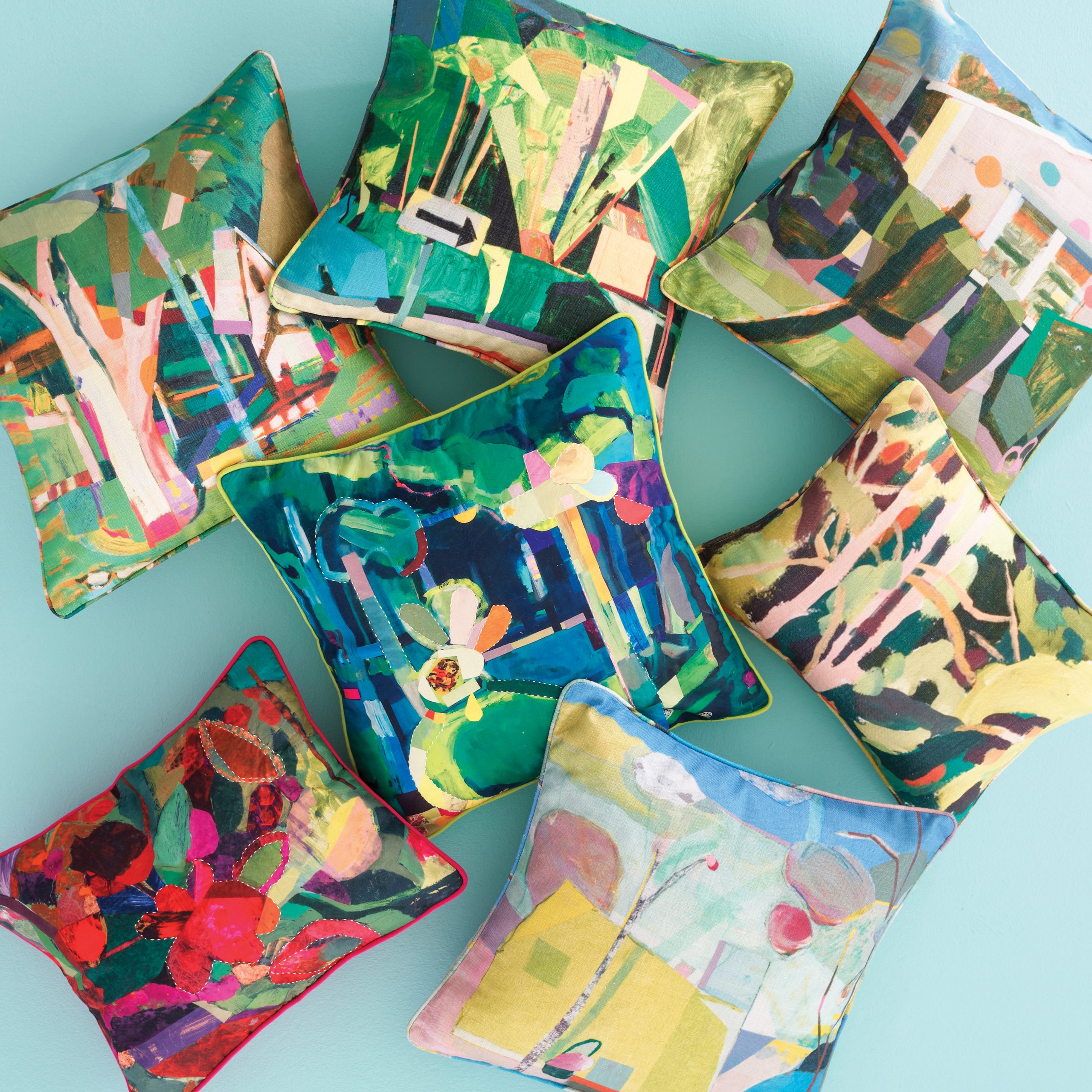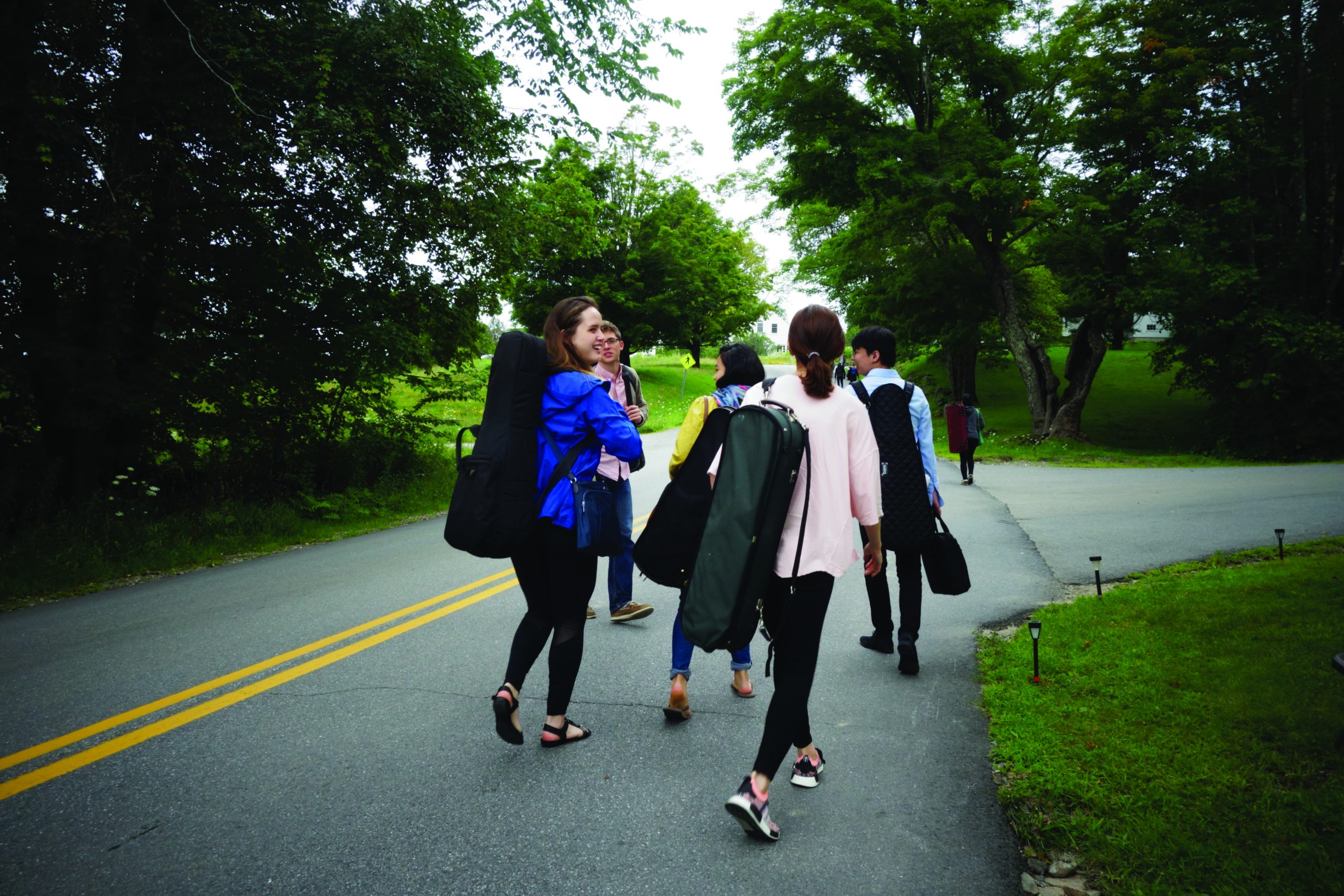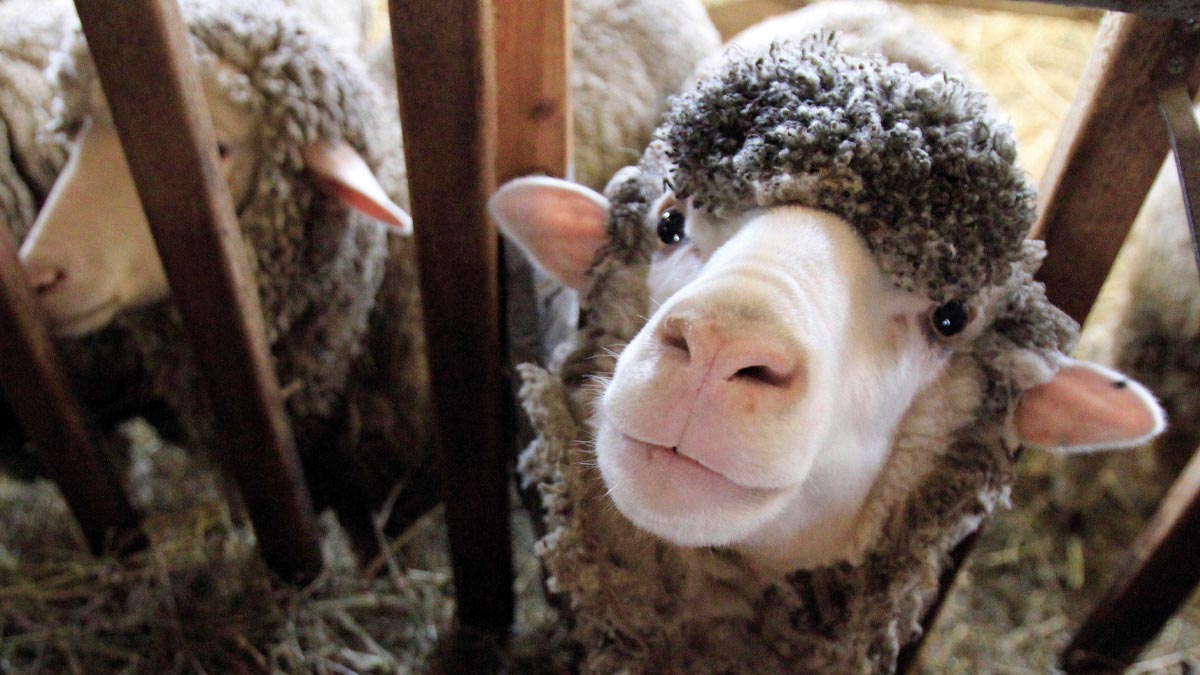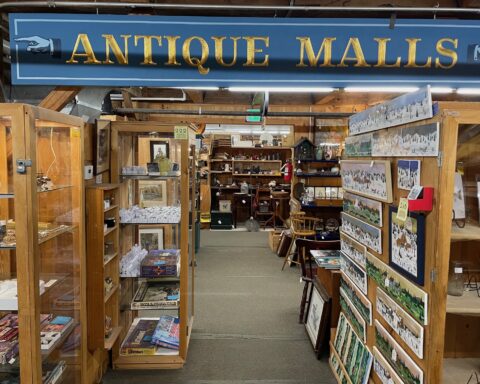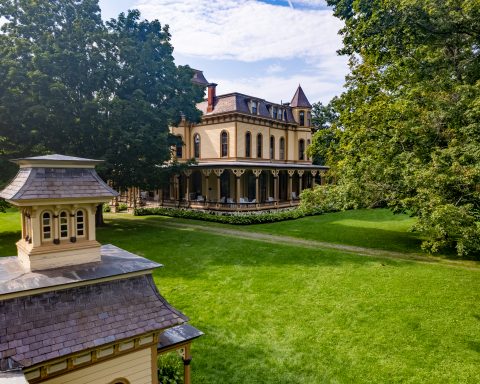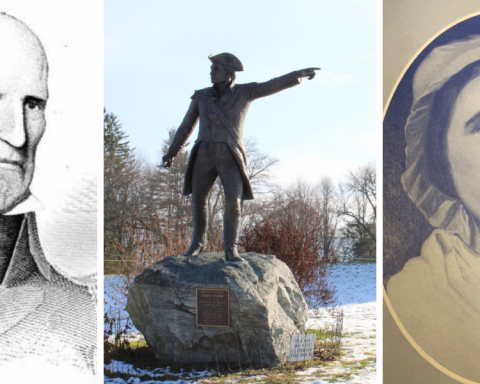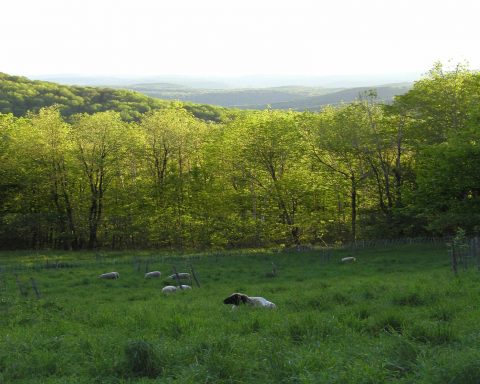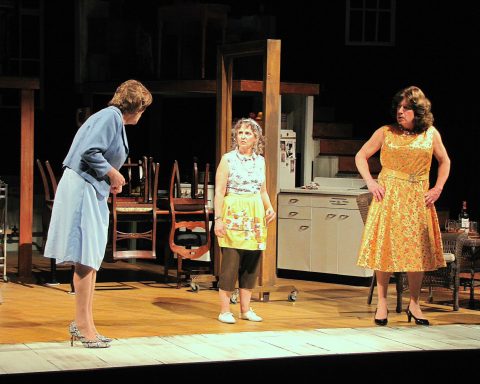6 inventions that helped changed the course of snow sports

By Jennifer Huberdeau
If you live, work or play in UpCountry territory, it should come as no surprise when we say that the Berkshires and Southern Vermont are home to some of the world’s foremost innovators, inventors and entrepreneurs. Their inventions and innovations have played a part in sending astronauts into space; harnessed alternating current; and helped many anglers secure the day’s catch.
Many firsts in the snow-sport industry — from skiing to snowboarding — have happened in Western Massachusetts and Vermont. It was here that some of the earliest artificial snow was made for ski slopes; the U.S. Ski Patrol was formed; and the first T-bar ski lift in the U.S. was installed (at Pico Peak).
While we couldn’t list every inventor, entrepreneur or innovation, we’re highlighting six snow sport-related firsts of importance…
Jake Burton Carpenter and the snowboard
All Jake Burton Carpenter wanted for Christmas in 1968 was a surfboard. He got a desk instead.
“I bought a Snurfer for $10 and spent a lot of time at the local sledding hill on Long Island with friends,” Carpenter, also known as Jake Burton, wrote in an autobiographical timeline he compiled. The timeline was published on the Burton Snowboards blog on Nov. 21, 2019. Carpenter, 65, died Nov. 20 after a battle with cancer.
If Carpenter had received the requested surfboard, he might never have purchased the Snurfer and eventually become known as “the godfather of snowboarding.”
The Snurfer, predecessor to the snowboard, was invented on Christmas Day 1965 in a garage in Muskegon, Mich., by Sherman Poppen. Poppen, who was trying to entertain his two young daughters and give his pregnant wife a much-needed break, invented the Snurfer when he connected his wife’s skis together, creating a monoski you could surf on snow with.
Like many great inventions, the Snurfer inspired many of its riders to improve upon it. Carpenter was one of those riders. He was convinced that surfing on snow could become a sport.
By 1977, Carpenter had moved to Londonderry, Vt., and started Burton Boards out of a barn on a property where he was the live-in caretaker and tended to two horses in exchange for rent.
“By night, I bartended at the Birkenhaus Inn. By day, I built makeshift snowboard prototypes and tested them in the back hills of southern Vermont,” Carpenter wrote in the timeline.
In January 1979, Carpenter showed up at the National Snurfing Contest in Muskegon with two of his Burton Boards. But his modifications disqualified him from participating in the standard division and instead, an “open division” was created just for Burton. The contest, run by Muskegon Community College, was underwritten that year by the JEM Corp. of Marion, Va., manufacturer of the Snurfer.
“Since no one was aware other boards existed, the college has never designed eligibility requirements for riders,” the Bay Window Collegiate, the student newspaper, reported in January 1979.
Carpenter won the open division and its prize money, but more importantly, he made the sporting world aware of Burton Boards.
“Anyone in the mono-ski business is familiar with the Snurfer and the college’s National Snurfing Contest,” Carpenter told the Collegiate. “I came to Muskegon because it is home to the entire sport and I wanted to see an actual competition.”

Burton Boards monoskis, soon after to be known as snowboards, were, as the student newspaper reported, about 6 inches longer than the Snurfer, an inch or two wider and more flexible. And unlike the Snurfer, Carpenter’s boards included a “ski-like binding for the forward foot and a grip pad for the rear foot” and “two aluminum skegs on either side of the rear of the board” — all of which granted the rider greater control of the board.
Burton Boards, now known as Burton Snowboards, moved from a barn in Londonderry to a barn in Manchester, Vt., in 1981.
“The barn was the factory, the living room was the store, the basement was the warehouse and the bedroom was the office,” Burton wrote. “The phone rang around the clock with toll-free catalog inquiries.”
But snowboarding couldn’t take off if ski areas continued to ban the sport from its slopes. Carpenter solved that problem in 1983, when he persuaded Stratton Mountain’s Ski Patrol to allow his crew on the ski lifts. That year, Stratton Mountain became the first major mountain resort in the country to allow snowboarding and would go on to open the first snowboarding school.
And two years later, in 1985, Burton launched the U.S. Open Snowboarding Championship at Stratton.
Today, Burton, located in Burlington, Vt., since 1992, is one of the largest snowboarding companies in the world.
The first rope tow
We’re stretching UpCountry’s northern borders to include Woodstock, Vt., where the first rope tow in the United States was located. Not only is it a great story — there’s a lot of drama — but Clarence “Clare” Bousquet traveled from Pittsfield, Mass., to Woodstock to view the rope tow and bring a version to his ski slopes on the other side of the Massachusetts border.
This tow rope was not the first (that happened in Germany), nor was it the first in North America. The first on the continent, which the one in Woodstock was modeled after, was installed in Shawbridge, Quebec, in 1933.

Bringing the tow rope to Vermont is said to have been the idea of Wallace “Bunny” Bertram, the Dartmouth College ski team’s first coach. According to the New England Historical Society, Bertram had told three New Yorkers about the Canadian tow rope during a stay at the White Cupboard Inn. The men were complaining to inn owners Elizabeth and Robert Royce about the price they were paying to lug their ski equipment uphill.
The Royces thought the tow rope was such a good idea that they swept in and rented Gilbert’s Hill, a nearby sheep pasture, before Bertram could. They built the tow rope with pulleys, an 1,800-foot rope and a Model T Ford engine. Despite the tow rope breaking down frequently, it was considered a success.
The next year, as the story goes, Bertram beat the couple to the punch and rented out Gilbert’s Hill before the Royces. Bertram worked out the issues with the tow rope, replacing the Ford engine with a more reliable one. A few years later, he moved the operation to a steeper hill, the beginning of the famous Suicide Six ski resort.
The Jack Jump
Have you heard of the jack jump or jack jumper? It’s essentially a small bench connected to a single ski that you ride down a hill or mountain, depending on how brave you are.
The origins of the jack jumper are clouded in mystery. Some say it was contrived by loggers in the mountains of Europe, where they are known as Skiblocks. Some say it was a children’s toy, created for winter recreation. The earliest examples seem to go back to the late 1800s. The earliest patent in North America was filed in 1914.
There are claims that the jack jump was invented in North Adams, Mass., and other claims that it originated at Mount Snow. And there are those who say without a doubt it was invented by Walter C. Pritchard of Adams.
“Some say the word ‘invented’ is a bit too strong,” Virginia Duval wrote in a 1979 article published by the North Adams Transcript. “But there is no doubt that Walter Pritchard was the prime producer of a piece of snow sledding equipment that was the rage in Adams all through the early and middle years of this century.”

Pritchard, an Adams blacksmith, set up shop in 1913 after purchasing a building at the corner of East Maple and Depot streets. Pritchard made the contraptions, which came in three sizes, out of wood. Steel runners were attached to the bottom of the ski.
Pritchard continued to make the jack jumps, which were shipped across the country until he retired and sold the business to Harry B. Sherman in 1953. A year later, Anthony Barbuto, of North Adams, bought the business and continued the tradition of making the jack jump until he became ill in 1978.
While these men were not the only ones to manufacture the jack jump, Pritchard and Barbuto were two of the most prolific. Pritchard’s jack jump is still found in attics, basements, garages and, in some cases, still in use.
Today’s jack jumps are not really any more sophisticated than those put out by Pritchard; only the material differs.
And the sport of gliding down the side of a mountain on a jack jump at high speed hasn’t disappeared either — the Jack Jump World Championships return to Mount Snow on March 1.
‘The man who put America on skis’
In Brattleboro, Vt., Fred Harris’ name is synonymous with ski jumping. He’s the designer of the Harris Hill Ski Jump and organizer of the Harris Hill Jumping Tournament in 1922. But Harris is more than the founder of Brattleboro’s ski jump.

Before he set his sights on the ski jump, Harris was busy founding the Dartmouth Outing Club at Dartmouth College in 1910. He also would found the Brattleboro Outing Club and, in 1922, when the U.S. Eastern Amateur Ski Association was founded, he became its first president. He served as vice president of the National Ski Association in 1928, and its treasurer from 1929 to 1931. And when the Winter Olympics took place in Lake Placid, N.Y., in 1932 and at Squaw Valley in 1960, Harris was there, as an official.
Harris just wasn’t a pioneer and organizer, he also is considered to be one of the first extreme skiers, “hiking to the top of and skiing down Whiteface Mountain in New York and Mount Washington in New Hampshire,” according to the Vermont Sports Hall of Fame.
Bousquet’s Rope Tow Gripper
Clarence “Clare” Bousquet installed his ski area’s first tow rope in 1935. He had made the trip to Woodstock, Vt., the year before, to get a good look at the one running on Gilbert’s Hill. But, like many innovators and entrepreneurs, Bousquet noticed that there were problems with the tow rope.
“In the springtime, when that manila rope got wet and heavy, the thing weighed a ton. On uncrowded days even very strong men couldn’t hold that heavy rope for the full [three to four minute] ride up the slope, even when lift attendants sprinkled resin on their hands to help hold onto the rope,” Paul Bousquet, Clare’s son told The Berkshire Sampler in March 1975.
So, Clare Bousquet fashioned a solution and applied for a patent in 1939 (it was granted two years later) for the Bousquet Rope Tow Gripper, described in The Berkshire Sampler as “a nutcracker-like instrument that attaches to a rope tow and to the skier’s belt and helps ease the strain of riding the lift.”

Bousquet’s Ski Tow Gripper is still used by the Mount Greylock Ski Club in Williamstown, Mass.. Clare Bousquet, who opened Bousquet’s Ski Area in Pittsfield, Mass., invented the tow gripper to make it easier to use a ski tow rope. Photos by Jennifer Huberdeau 
Bousquet’s Ski Tow Gripper is still used by the Mount Greylock Ski Club in Williamstown, Mass.. Clare Bousquet, who opened Bousquet’s Ski Area in Pittsfield, Mass., invented the tow gripper to make it easier to use a ski tow rope. Photos by Jennifer Huberdeau 
Bousquet’s Ski Tow Gripper is still used by the Mount Greylock Ski Club in Williamstown, Mass.. Clare Bousquet, who opened Bousquet’s Ski Area in Pittsfield, Mass., invented the tow gripper to make it easier to use a ski tow rope. Photos by Jennifer Huberdeau
The rope tow gripper was so popular, the Bousquets sold over 500,000 of them. And when tow grippers were outlawed by many states, the Bousquet version still was welcomed because it “automatically detaches from the tow rope if the skier falls or releases his grasp on the rope tow gripper.”
And the Mount Greylock Ski Club, which spent a few years climbing Bousquet’s trails until opening its own in Williamstown, still uses the gripper today.
Night Skiing at Bousquet
Credit often is given to the Snoqualmie Ski Bowl, later known as the Milwaukee Ski Bowl, as being the first to install lights for night skiing, in 1938. But, in 1936, Clare Bousquet, with the assistance of General Electric and Pittsfield Electric, put up the first lights on a ski slope.
“Some skiing engineers from Pittsfield’s General Electric plant and Warren Sears and Win Gutman from Pittsfield Electric Co. decided that 25 days of skiing wasn’t enough, especially since they had to work during the day. So they put their heads together and decided that they could greatly increase their skiing time if they could figure out a way to light the ski slopes for night skiing and they did,” The Berkshire Sampler wrote in March 1975.

Bousquet’s slopes first were lit on Christmas Eve in 1936. Pittsfield Electric installed seven clusters of 1,000 mercury vapor lights that were lent by GE. Night skiing took place three nights a week under a total of 7,000 watts of light — a small amount in comparison to today’s lighting systems, but a revolutionary amount at the time. •
